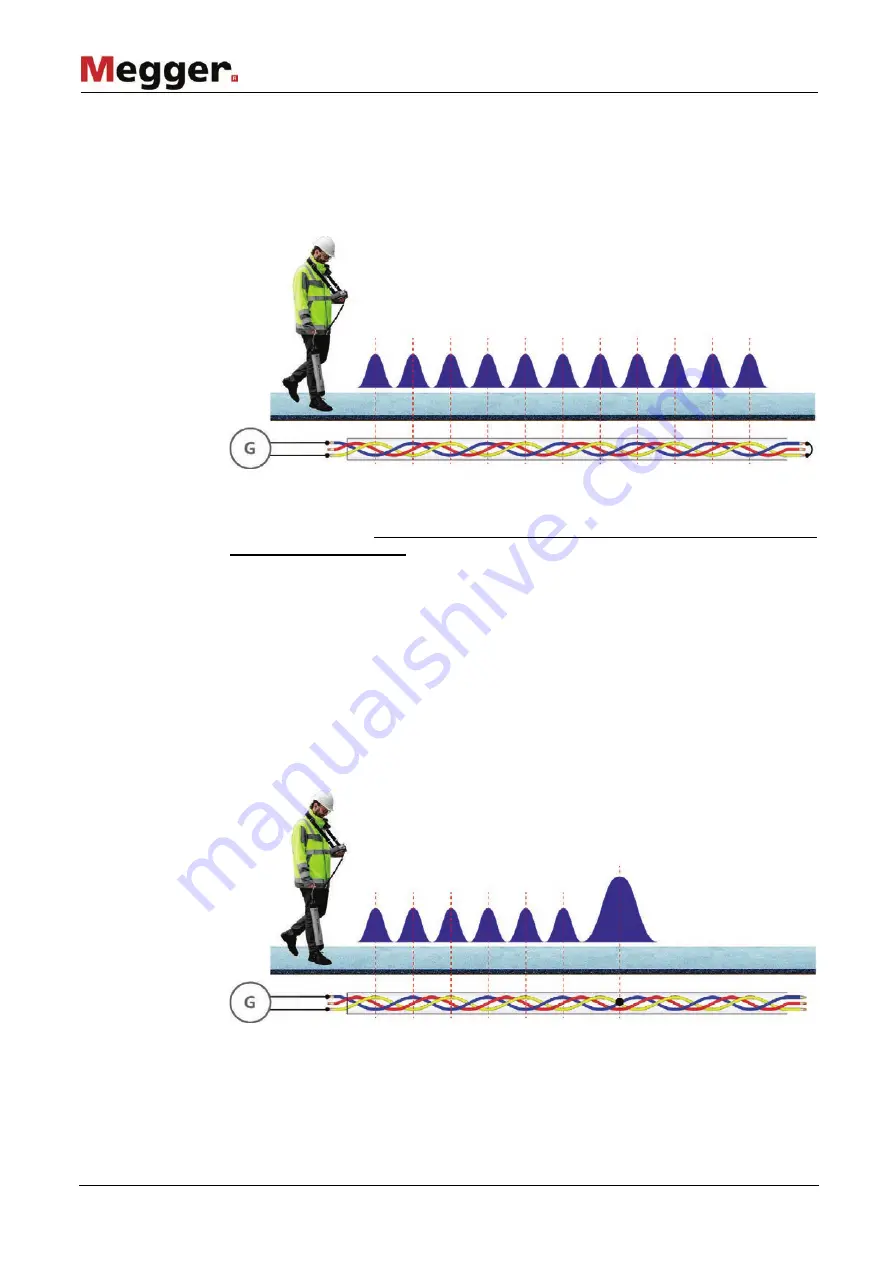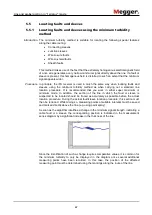
Line and probe location in “Ferrolux” mode
68
5.5.2
Locating faults and sleeves using the “Twisted-Field” method
The iFS receiver can be used to measure a longitudinal twist in twisted multicore cables
from the surface. The twist is detected due to a constant fluctuation of the signal level
when travelling at the same speed along the cable route.
To perform this measurement, the audio frequency signal must be applied to a short-
circuited pair of wires and the highest possible current must be set at the generator. For
twist measurements,
the depth at which the cable is routed should not be greater
than the length of a twist
.
In principle, the longitudinal twist can be measured in maximum or minimum mode.
However, since the minimum mode is more susceptible to overlapping from single-core
cables routed parallel to the multicore cable, it is preferable to carry out the
measurement using maximum mode. The relevant cable section should be traced and
marked before the actual fault or sleeve location procedure takes place, as this will allow
the route to be retraced more quickly at a later stage.
In the case of low-impedance wire-to-wire faults (<10
Ω), the signal must be applied to
both of the faulty wires. In such cases, do not short circuit the end of the cable. This is to
allow the current to flow directly over the fault. Depending on the location of the fault,
there will be either a particularly high or particularly low signal level directly above the
fault. The signal is abruptly interrupted once the location of the fault has been passed.
Introduction
Locating low-
impedance wire-to-wire
faults
Summary of Contents for digiPHONE+2
Page 2: ...2 ...
















































